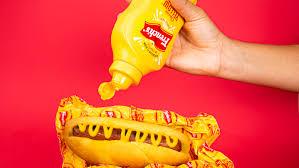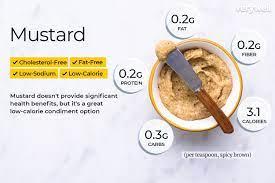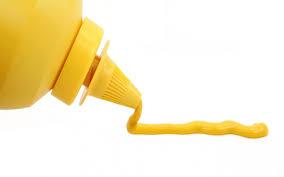Results: Condimentrivia -- Must Have Mustard!
Published on 07/04/2022
QUESTIONS
GO to COMMENTS
Comments
1.
1.
Mustard may have become popular for Americans in the early 20th century when it was introduced to the hot dog, but its history is even longer and spicier. There is even a National Mustard Day (August 3), and here are some facts about the popular condiment. First, let's set the record straight...prepared mustard is the condiment, while mustard plants are close relatives to a surprising variety of common vegetables, including broccoli, cauliflower, turnips, and cabbage. Have you ever enjoyed mustard as a condiment or as a vegetable?

As a condiment
71%
1484 votes
As a vegetable
3%
63 votes
Both
9%
189 votes
Neither
17%
364 votes
2.
2.
Mustard was the first condiment humans ever put on their food. Egyptian pharaohs stocked their tombs with mustard seeds to accompany them into the afterlife, but the Romans were the first to grind the spicy seeds into a spreadable paste and mix them with a flavorful liquid—usually, wine or vinegar. French monks, who mixed the ground seeds with "must," or unfermented wine, inspired the word "mustard". Were you aware of mustard's historic "roots"? Yes
15%
306 votes
No
74%
1554 votes
Undecided
11%
240 votes
3.
3.
Mustard has long been revered for its healing properties. Pythagoras endorsed a poultice of mustard seeds as a cure for scorpion stings. Hippocrates praised mustard paste as a miracle remedy capable of soothing pains and aches; and ancient Roman physicians used it to ease toothaches. Over the years, mustard has been used for appetite stimulation, sinus clearing, and frostbite prevention. It's now touted as a weight loss supplement, asthma suppressant, hair growth stimulant, immunity booster, cholesterol regulator, dermatitis treatment, and even as an effective method of warding off gastrointestinal cancer. Have you ever used mustard medicinally?

Yes
12%
248 votes
No
78%
1629 votes
Undecided
11%
223 votes
4.
4.
Which of these spicy trivia bits did you know?

Peppercorns are the most used spice in the United States; mustard comes in second.
13%
268 votes
Two countries (Canada and Nepal) are responsible for most of the world's mustard.
10%
211 votes
Mustard doesn't spoil.
27%
568 votes
Southern Wisconsin is proud to call itself the home of the National Mustard Museum, which boasts "more than 5566 jars, bottles, and tubes from all 50 states and more than 70 countries."
7%
144 votes
None
59%
1241 votes
5.
5.
Finally, which of these trivia facts did you know? The United States consumes more mustard than any other country.
15%
318 votes
The earliest record of people using mustard on hotdogs dates back to St Louis World's Fair in 1904.
11%
233 votes
The yellow color only comes from adding either turmeric or artificial coloring to the finished product. Without it, mustard actually has a naturally dull grey or even brown color.
22%
467 votes
None
64%
1339 votes
COMMENTS

